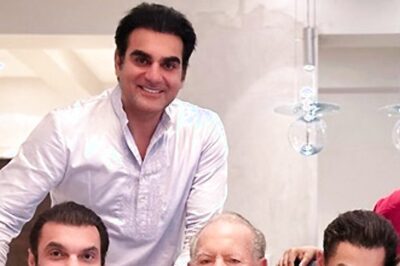
views
HYDERABAD: The poverty estimates by the Planning Commission show that 29.8% or 360 million Indians were poor in 2009-10 as compared to 37.2% or 400 million in 2004-05. To arrive at these figures, it has defined the poor as one who spends less than Rs 28 per day in urban areas and Rs 22.5 in rural areas. These figures are lower than the rs 32 in urban areas and Rs 26 in rural areas for the year 2010-11, given to the Supreme Court by the panel.Whatever the statistics, is it possible for one to live on Rs 28 per day in a city like Hyderabad? “These values suffice for subsistence to prevent starvation-related deaths. It does not take into account a balanced diet,” points out Dr A Laxmaiah, a public health nutritionist at the National Institute of Nutrition (NIN), Hyderabad.The dietary guidelines issued by NIN mandate that an average man should ideally eat 200-250 grams of vegetables a day and 150 grams of fruits. If one goes by this, the average expenditure on food goes much beyond Rs 32 / Rs 28 per day. “The government is focused only on the calorie and protein sufficiency of the population. It does not take into account the micro-nutrient levels in food. Though it combats the ‘visible hunger’ through this approach, hidden hunger for micro-nutrients remains,” explains the head of the division of community studies.The Planning Commission’s figures set for poverty line account only for the amount of food required for survival and hardly anything else. “God forbid if a daily wage labourer comes down with fever for even two days! It becomes a death trap where they can neither earn to feed themselves nor afford to pay for medical attention,” says Abdul Mujeeb Khan, a volunteer who works for a non-governmental organization, Bhoomi. He and eight other like-minded friends had undertaken a marathon walk from Kanyakumari to New Delhi for a campaign called Honest Steps as part of which they all had tried to live on Rs 32 a day, the magic number, which according to the Planning Commission, decides on which side of the poverty line you are.“Needless to say, we failed miserably. We had to spend Rs 50 to Rs 60 per day per head, that too only for food. We tried cutting costs by cooking and other means, but the target is just not realistic,” observes Mujeeb. All this juggling of figures, critics point out, could be to cut down on subsidies. But it appears that even the subsidised food supplied by the government fails to meet the scientific standards. “Even the government’s mid-day meal scheme or the Integrated Child Development Scheme account for only one third of the day’s total nutrition. The money spent on the other two meals leaves hardly anything for medical expenses,” opines Dr A Laxmaiah.Mujeeb offers a different take on this. “When we were at Sironj village at Vidisha district in Madhya Pradesh, a man told us how doctors at the government hospital refused to even take his pulse though he was diagnosed by a private practitioner as suffering from tuberculosis. His exact words were, ‘since we are poor, the doctors don’t even want to touch us.’ The lack of involvement by civil society reinforces the sorry state of affairs, he observes. Deputy Chairman of the Planning Commission Montek Singh Ahluwalia’s defence that they had used the old poverty line (Rs 28) because the consumer survey is from an earlier year cuts no ice with people working among the poor.



















Comments
0 comment